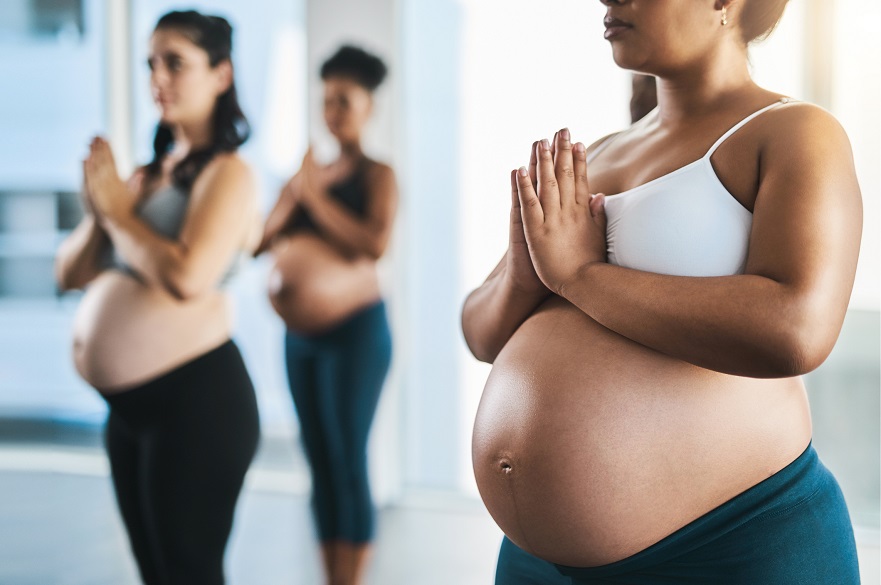Expert blog: There’s more focus on women’s sport and exercise than ever before – so why is activewear for pregnant and postnatal females still lagging behind?
By Katie Reeves, PhD researcher in NTU’s School of Science and Technology.
Published on 21 February 2023
Categories: Press office; Research; School of Science and Technology;

Over the past 25 years, women’s participation in physical activity has increased substantially.
Fewer than a third (28%) of women met physical activity guidelines in 2006, but this had more than doubled to 65% by 2019.
At the same time the gender gap also decreased from 12% to only 5% between the number of men and women meeting those guidelines.
The Covid-19 pandemic also influenced participation in physical activity, with more than 61% of women stating they would put more effort into physical activity after lockdown.
Media coverage of women’s sport ballooned from 19.1 million hours viewed in 2012 to 325 million hours in 2022. In the past three years alone, there has been a near 30% increase in viewers, and 2022 saw the highest ever audience for UK women’s football recorded during the July European Championships.
More than 27 million people watched that iconic moment when Lioness Chloe Kelly scored the winning goal and celebrated by showing the world her sports bra.
This quickly became a history-making moment celebrating what women can do, both within and outside of sport.
Alongside this, the textile industry has also been growing with developments in materials and manufacturing methods, with seamless technology increasing in popularity.
So why then, despite a growth in the women’s activewear market, are there still few products for pregnant and postnatal females? And why are those that are available often poorly designed?
The extent of the changes that the female body undergoes during and after pregnancy means ‘standard’ activewear is rarely suitable for ante and postnatal females.
And we know that physical activity during and after pregnancy is beneficial to both a mother and her baby – but that many females do not meet physical activity guidelines during this period.
It is true that pregnant, and postnatal females continue to face key barriers relating to physical activity and these need to be considered when designing and manufacturing activewear and sports clothing.
Breasts are unfortunately one such barrier. They are unique and often change shape and size both over a month as well as over a woman’s lifetime. They contain no muscle and so a sports bra is needed to control breast movement. Insufficient support leads to pain and embarrassment, with physical activity reported as the number one cause of breast pain.
Since breast support is the most important method of reducing breast pain, a sports bra should be a fundamental piece of women’s activewear. A well-fitted, supportive, and comfortable sports bra may encourage women’s comfortable and pain free participation in physical activity.
Breastfeeding is another barrier – more than 85% of mothers reported that nursing their child influenced their participation in physical activity.
Sports bras which adapt to the ever-changing breast, whilst still providing support and allow breastfeeding, are vital to help reduce the barriers to physical activity faced by this population.
It is clear that specialist wear is essential to meet women’s specific needs and requirements and new products should be developed by working with women to fully understand the issue.
With this in mind, we are undertaking our own research to understand the needs of pre- and post-natal females to determine the essential features needed to optimise future products, with a specific focus on sports bras.
We want to identify consumers’ opinions on the products currently available as well as their ideas for future product developments. We’ll also collect information on physical activity and experience of pregnancy and nursing to provide a full understanding of the topic.
The information collected will be used to support further research to enable consumer needs to be met by future product developments.
While there has been progress, we are still hindered by gender inequality in this area. In 2020, the German gymnastics team wore full-legged unitards rather than the traditional bikini cut to combat sexualization in the sport and in 2021 the Norwegian women’s beach handball team were fined for wearing shorts rather than bikinis.
The increased participation in physical activity by women and media coverage of women's sport is truly fantastic – and must be met with continued commercial and research developments that cater for all.